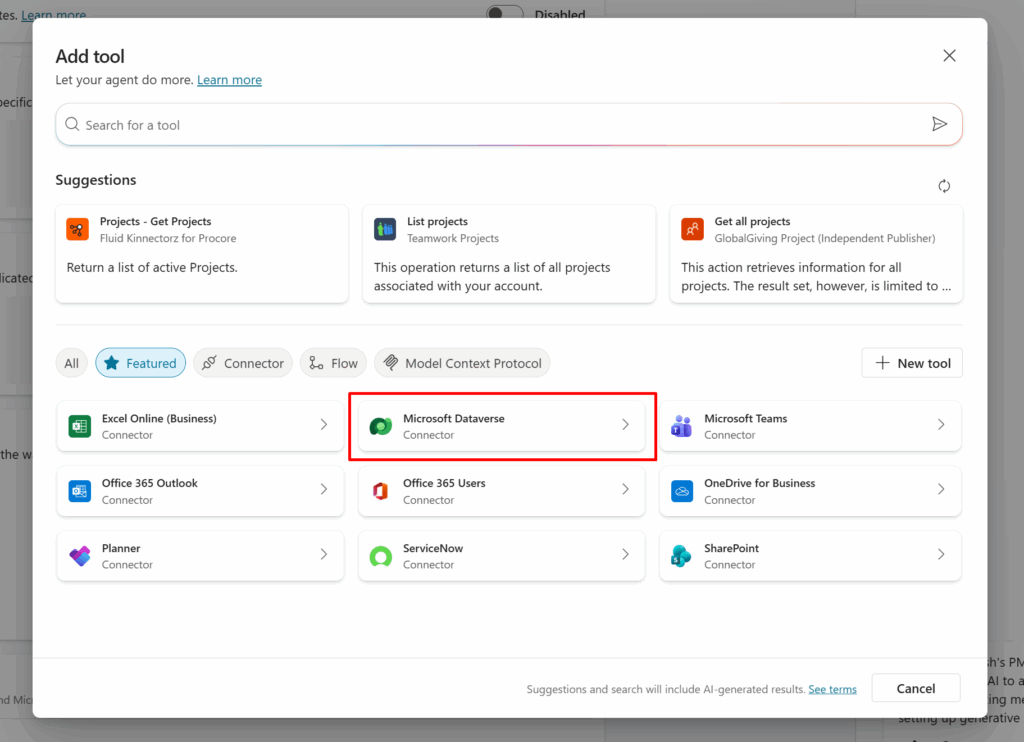Now Reading: Dynamics CRM Online – Leads VS. Contacts
-
01
Dynamics CRM Online – Leads VS. Contacts
Dynamics CRM Online – Leads VS. Contacts

If you have read any of my posts, then you know that I am very concerned that Dynamics CRM Online deployments are successful. In the world of Software as a Service (SaaS), this is more important than it has ever been, because if it is not working for you, you just cancel the service. You no longer have to suffer through a crappy deployment, just to get a return on your significant up-front investment… you just cancel the service. While this seems great for customers, it actually puts us both in an interesting position. Your low financial commitment can mean that several other things are also lower: like your commitment to success, or the threshold at which you might decide to pull the plug on the effort. Granted, you obviously see the great potential for Dynamics CRM Online to catapult your business to new heights, but frankly, it isn’t costing you the princely sum commensurate with this potential value.
Many customers, particularly those new to CRM, ride a razors edge through the deployment of thinking “This will be Awesome” or “This is too much work”. One of the dependable factors for consultants in the past was that once a client plunked down a pile of cash, they had little choice but to give it their absolute best efforts. Back in those days, since clients had committed the significant funds, consultants could happily embrace the universal mantra that “The Client is Always Right”. I mean hey, you paid for it, if you want to drive the bus down pothole lane, I can’t stop you and I’m getting off at the next stop anyway.
Well, things are a lot different today. We find that too many customers seek the path of least resistance, as though since their investment is so low, achieving even minimal benefits will justify it. To me, achieving minimal benefits is a failure. If you want a glorified contact manager, there are other, less powerful options. So today we find, “The Customer is Usually Wrong”. Today, I no longer have the option of simply agreeing with something that I know will not lead to success, just because the customer wants/tells us to. Like it or not, in this brave new world, we also have a vested interest in your success with Dynamics CRM Online. The term “Microsoft Partner” means we are partners with Microsoft in our joint success, well today it also means we are partners with you in our joint success. The goal of our RapidStart for Dynamics CRM Online models is to put you, or get you, on the right path. Okay, that’s enough backdrop, let me get on with the point of this post.
In a recent post I wrote about some “Best Practices” for Dynamics CRM Online, or any other true CRM for that matter. In this post I want to cover a continuously misunderstood concept: the difference between a Lead and a Contact, or an Opportunity or Account for that matter. I think one of the reasons that this concept seems to be so hard to grasp is that so many of us have not worked this way in the past. For older users this is particularly difficult as their habits are more deeply ingrained. But Outlook does not differentiate, nor does an Excel spreadsheet “require” any unique handling of contact information. However, make no mistake, if you do not grasp this fundamental CRM concept, your CRM will fail. There is a reason that Outlook and Excel are no longer working for you, each of them are just a big “people pile”, and are entirely too dependent on your memory of what’s what. One of the core concepts of CRM is sorting your great big people pile into distinct more meaningful piles allowing you to focus segmentally. There are actually four record types involved in this: Leads, Accounts, Contacts and Opportunities. But in simple terms we are really just going to think about two piles, think of them as “Zombies” and “Humans”.
Leads are Zombies
Leads are a lot like Zombies; I mean they exist, but they are not really alive, at least for you. Your Outlook and Excel “People Pile” is full of Zombies, but it is also full of “Humans”. Humans are the people you actually know, or currently work with, or at least have spoken to. Part of the problem is that your People Pile has Zombies and Humans in the same pile, bumping into each other all the time. Dynamics CRM Online provides a place where you can attempt to cure Zombies and turn them into Humans, without infecting your current Humans, and this is Leads. Open your Outlook contacts, and start scrolling down from the top. You will see people you have never talked to or have not talked to in years… they are Zombies. Your contact list is infected. Some people have way more Zombies than Humans in their Outlook contacts. So why not just delete all the Zombies? Because you know that if you reach out to them someday, and get your message across, you might be able to cure them and turn them into Humans. Because, only Humans will buy from you. So we can’t just delete the Zombies, we desperately need them. Let’s say you got your hands on the attendee list from that last event you exhibited at… you got a list of Zombies. Okay, maybe not all Zombies. 5,000 people attended, a hundred stopped at your table, ten said that want to do business with you. So maybe it’s only 4,990 Zombies. What do you do with them? With Dynamics CRM Online, we have a quarantine area, it’s called Leads.
Diagnosing Leads
So a Lead record looks a lot like what you might think of as a Contact record you use today. It may contain a Zombie’s name and some contact information. It may also have some information about the Zombie’s company, and maybe even your educated guess as to what they might some day be a prospect for. Most of this can be derived from a business card. A healthy pipeline is built from methodically curing Zombies from your pile. So what’s the cure? You tell me, is it email campaigns, is it cold calls, is it mailings, elevator stalking, all of the above?
One thing is for sure, the prescription is different for your Zombies than the one that you will prescribe for a Human to close an actual deal. The beauty of Dynamics CRM Online is that you have this special area, where you can allocate some of your time or resources to developing and disseminating your cure. The process of “Qualifying a Lead” is the equivalent of removing a Zombie from Quarantine. So what happens to a Lead when it is qualified? It splits like an atom. Take a look at the graphic below:

A Lead is a consolidated view of a person, business and interest. When you “Qualify a Lead”, it is split into its parts, but the parts remain linked to each other. Simultaneous with Qualifying, and thereby deactivating, a Lead, three brand new records are created: a) a Contact, with the individual information that was on the Lead record, b) an Account with the business information that was on the Lead record, and c) an Opportunity with information about the product or service the Lead ultimately demonstrated interest in… the Cure. So this Zombie has been cured and has now been added to your existing, presumably smaller, pile of Humans. So why separate into three different records? Well, an Account (company) can have more than one Contact (person), and a Contact can have more than one Opportunity (deal). In fact an Account can have a bunch of Opportunities, each with a different Contact. Or an Account can have an Opportunity for which you have not yet determined the proper Contact. An Account can also have other Contacts you have identified that might relate in some way to an Opportunity you have associated with yet another Contact. There are many combinations and Dynamics CRM Online manages this spider-web of relationships in a way Outlook and Excel could not hope to.
Guarding the Fence
Since I have previously covered this next item ad-nauseam, I will go over it again. A healthy pipeline will include a very large number of Zombies (Leads), with ongoing efforts to increase that pile. A healthy pipeline will also include a much smaller number of Humans (Account/Contact/Opportunity) that are “in-play” for specific deals.
A large organization may have a separate team, like an outbound call center, or Marketing Department for example, who focus on finding and curing Zombies, otherwise know as Lead Generation and Qualification. Also, in many large organizations the sales team never sees the Zombies, they only see the Qualified Opportunities, and their work of closing deals is much different. Let’s imagine a scenario where these piles got mixed up. Bob, who is ready to buy from you right now, is getting messages “introducing” your firm. Mary, who has never heard of you, is getting messages to move forward and buy your product, a product that she has also never heard of. The approach and messaging for these two distinct groups is necessarily different. How many of you send out the same newsletter to everybody? Way too many of you.
For a smaller organization, without these separate departments, where most often the same people wear both hats, the principle remains the same. When “working” on Zombies you wear one hat, when “working” a deal with a Human, you must wear a completely different hat. You must be wearing the right hat for the task. This is why guarding the fence between Zombies and Humans is so important, and is also why CRM is designed the way it is. It is also why it does a better job of growing your business.
A few tips regarding the fence
- Establish a policy on what constitutes an “Opportunity”. Determine the specific circumstances that must occur before Qualifying a Lead into an Opportunity/Account/Contact. Be aware, that if you set the threshold too low, you will let too many Zombies in.
- Run your projections against Opportunities (ignoring Leads) so you are not deluding yourself.
- Watch out for sales team members aggressively qualifying Zombies to appear like they are more successful than they actually are. This is particularly true if you scream and yell a lot during “Pipeline” meetings.
- Have a distinct plan for curing your Zombies, and a separate distinct plan for closing your Humans.
I know I have covered all of this many times in the past, and from many different angles. All I can say is that the odds are high that I will cover it again in the near future from yet another angle.
Feel free to add your comments below, I have an open and transparent policy of approving every single comment… provided I like it.
The post Dynamics CRM Online – Leads VS. Contacts first appeared on Steve Mordue MVP.













